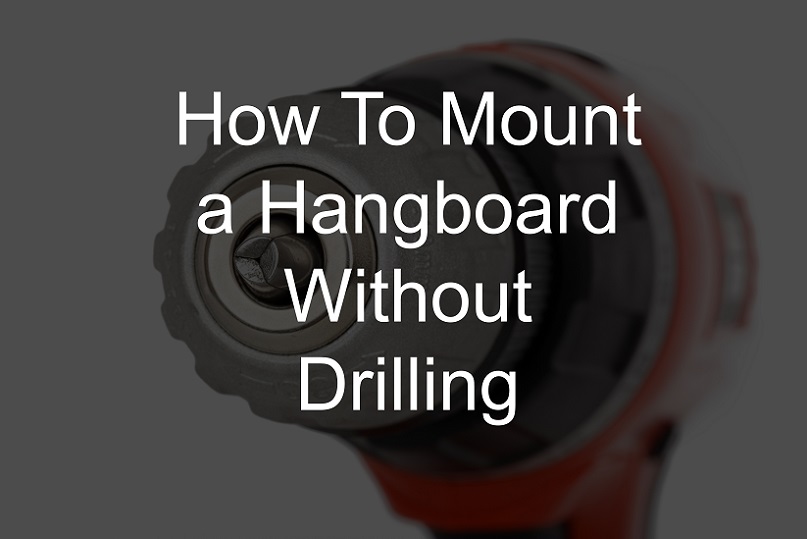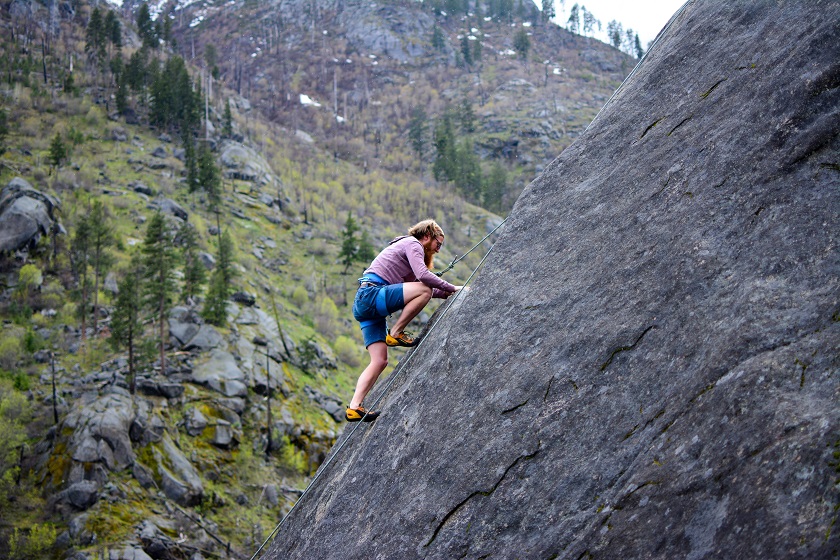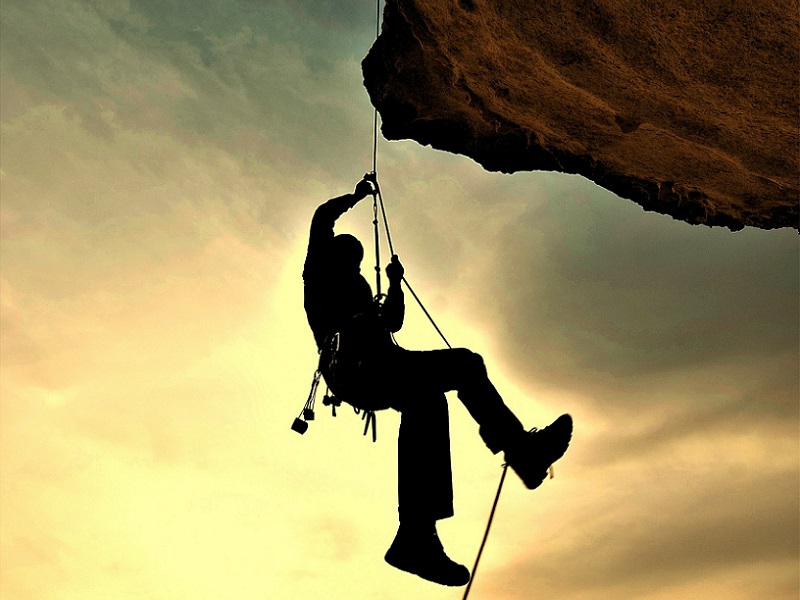The problem with the lifespan of climbing harnesses, and climbing equipment in general, is that it depends or many factors:
Manufacturers give indications of the lifespan of your climbing harness based on either the amount of years after the manufacture date, or the years after first use.
But equally important, if not more, are the storing conditions and the frequency of use of your climbing harness.
Moreover, it is understandable that most manufacturers also account for a margin of safety and give lifespan indications that are shorter than the actual usability of the climbing harness.
This makes it incredibly difficult to give a definitive answer on what the lifespan of a climbing harness really is, and when you should retire it.
In this article, we’re going to make sense of it all.
We’ll first list all of the official lifespans that the different manufacturers have given to their climbing harnesses.
Then, we’ll look into some external factors that influence the lifespan of your climbing harness.
Lastly, we’ll list a number of tells that give away that your climbing harness should be retired.
By the end of the article, you will have a better understanding of when it is time to retire your climbing harness and make a better judgement yourself.
Let’s get into it.
Official Lifespan of Climbing Harnesses as indicated by the manufacturer
I spent several hours today reading all the small prints on manufacturers websites about the lifespan of their harnesses. Some of the information was really hard to find, so I hope you appreciate this easy to read table chart that I’ve made. I also sent a couple of emails out to the companies of which I could not find satisfactory information.
As it turns out, manufacturers consider two things: the date of manufacturing and the date of first use.
Some manufacturers just include one criterium for when it’s time for retirement. Others use both. In the case the manufacturer gives two criteria, the following rule applies:
Whichever of the two criteria expires first (manufacturing date and date of first use), should be the deadline for you to retire your climbing harness.
So, for example, when a manufacturer says the harness is safe to use up to 10 years after manufacturing and up to 5 years after its first use, this means that if you only started using the harness in the 6th year after it was produced, you need to retire it in the 4th year after you used it for the first time.
Here’s the list of the lifespan of the harnesses of all climbing harness manufacturers I could find. I’ve also attached the warranty period for their equipment in the third column:
| Brand | Maximum years after manufacturing | Maximum Years After First Use | Warranty (Years) |
| Blue Ice | – | 5 | 3 |
| Climb X | – | 5 | 3 |
| Metolius | – | 5 | 1 |
| Stubai | – | 5 | ? |
| Trango | – | 5 | 2 |
| Black Diamond | 10 | 5 | 1 |
| Simond | 10 | 5 | 2 |
| Wild Country | 10 | 5 | 2 |
| Mammut | 10 | 7 | 2 |
| AustriAlpin | 10 | – | ? |
| C.A.M.P. | 10 | – | 3 |
| DMM | 10 | – | 3 |
| KONG | 10 | – | 2(?) |
| Ocun | 10 | – | 2 |
| Petzl | 10 | – | 3 |
| Climbing Technology | 12 | 10 | 3 |
| Edelrid | 12 | 10 | 3 |
| Beal | 15 | 10 | 3 |
| Edelweiss | 15 | 10 | 2 |
| Rock Empire | 15 | 10 | 2 |
| Singing Rock | 15 | 10 | 3 |
So, what is the lifespan of a typical climbing harness?
As follows from this chart, the mean lifespan of a climbing harness in years after manufacturing is 11,5 years and the median is 10 years; while the mean lifespan of climbing harnesses in years after its first use is 7,1 with a median of 5.
Of course, these numbers will vary according to how often the harness is used during this time, and if it has been properly stored. In the next section, we’ll look into that.
Before we move on, though, just a quick note on the warranty.
One of the things that stood out to me is that in all cases I could find, the warranty does not cover wear and tear caused by normal use of the harness. So if you climb with it and it is damaged, that’s bad luck. If however you don’t use it for a while after you purchased it and you discover a fault prior to climbing, the warranty will cover that.
So in conclusion, I would not let the warranty play a major role in your buying decision after you’ve retired your old harness, and instead focus on the lifetime expectancy and the basic specs like comfort, maximum kN, loops for your tools and price.
Factors that influence the actual lifespan of your climbing harness
There’s several factors that will reduce the lifespan of your climbing harness. Some of these may be quite unexpected, like exposure to sunlight.
Here’s the list of the most common exposures that shorten the lifespan of your harness:
- Impact from falling
- Exposure to heat
- Exposure to humidity
- Exposure to sunlight
- Exposure to chemicals, like (the fumes of) battery acid (sulfuric acid), or fuels
- Exposure to extreme conditions, including temperature, both hot and cold
- Exposure to rodents, pets and other animals
- Exposure to mildew
List of visual indicators that you should retire your climbing harness
Apart from the above mentioned factors that will wear down the lifecycle of your climbing harness, there’s also a myriad of visual clues that will tell you it’s time to buy a new harness:
- Discolouration
- When parts are coming unstitched
- Worn out belay loop and tie-in point
- Damaged safety stitching
- Visible wear in any part
- Marks on the webbing, e.g. from a waterproof pencil
- Damaged webbing
- Cut webbing
- Torn webbing
- Damaged buckles
- Optional: is the wear indicator visible?
Some climbers like to use the so called ¨10% rule¨ to determine whether a harness is still safe. This rule dictates that if a structural part of your harness is 91% in tact, it is still usable. At a 10% cut, you should retire and destroy it.
Personally, I don’t like to even take this risk, and I will retire my harness as soon as I see a small cut.
List of invisible indicators that you should retire your harness
Here are some other things you need to consider when evaluating whether it’s time to part from your trusted climbing harness:
- Harness is too old
- Harness has handled a significant amount of force
- Harness has been improperly stored, e.g. in humid conditions or in the sunlight
When you can think of any other reason to retire your climbing harness, it’s probably best that you do.
When to retire your climbing harness per frequency of use
Taking all that we’ve said above into consideration, we may carefully give an indication of the lifespan of a climbing harness given how often you use it:
- Never used: until the maximum dormant years after production, as set by the manufacturer (usually 10, sometimes up to 15 years)
- Used once: 5 years, up to 10 years depending on the brand
- Used monthly: up to 5 years
- Used weekly: up to 3 years
- Used daily: no more than one year
The golden rule is: if you don’t trust it, retire it. As we’ve pointed out, there’s many a thing that can happen to a climbing harness that will reduce its lifespan and necessitates that you retire it earlier than these rough indications.
Bottomline
So there you have it! The average lifespan of climbing harnesses by most brands is 10 years from the point of being manufactured, or 5 years after the first time you use the harness.
This lifespan can be drastically decreased by climbing a lot, or through exposure of your harness to things like sunlight, acid, water, or abrasion.
Use common sense and be honest when you evaluate whether it is time to retire your climbing harness.
Related questions:
Should retired gear be destroyed?
Yes. If you don’t destroy your climbing harness after it has been retired, you risk that the harness will be used again. This may have deadly implications.
Can you clean a climbing harness?
Yes you can, but this should be done in luke warm water. Don’t expose your gear to harsh chemicals, as this may affect the safety of the harness.
Is the lifespan of the climbing harness measured from date of sale?
No. It is important to note that the lifespan starts at the manufacturing date. When shops have a large stock of gear, there may be a significant amount of time between manufacturing and the sale. Therefore, it is imperative that you check the actual date of manufacturing, which you can find on your harness.






